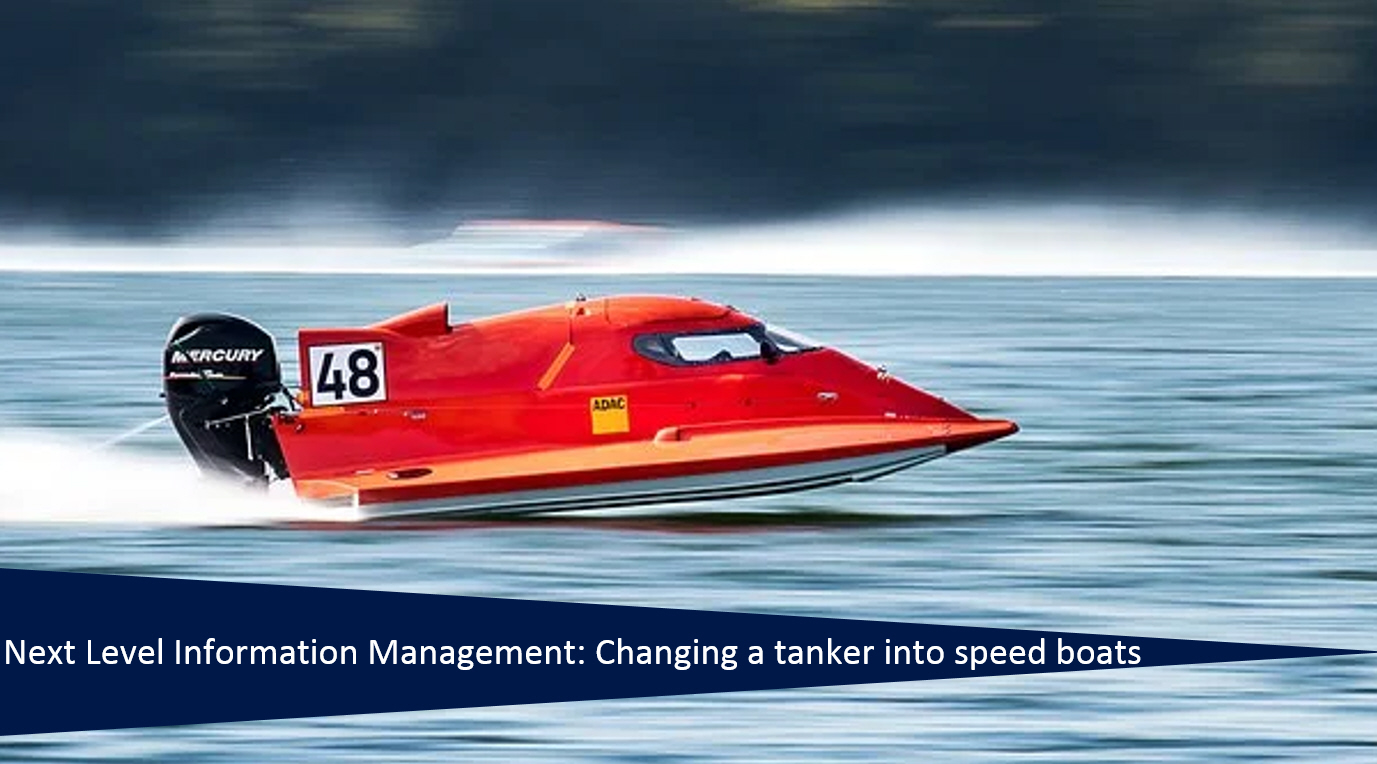
Changing a tanker into speed boats
As a leader you may think that “yeah, I heard about all this agile, flexibility, empowerment and all these buzzwords. But how to change an IT landscape which is like a “tanker” to “speed boats” in times of uncertainty and faster changes?
Assuming replacing your ERP backbone system is not an option, you need to address opportunities, risks and challenges in your strategy of enhancing your ERP and IT landscape.
Which technology is the best solution? Consider best of breed or adding new modules of existing ERP providers through software evaluation. More than 20 years ago, the best of breed approach was “en vogue” whereas during the recent years, adding products from the existing ERP providers became more standard approach.
When considering the “speed boat” approach, ask yourself the following questions:
- What data streams do I need to consider?
- What data volume should be processed?
- Is data distribution important?
- What are the compliance, GDPR and security considerations?
- Where does the data occur?
- Which data is about write or read?
Once the appropriate technology and the business requirements are aligned, you can start focusing on the required skills to address the differences between the existing IT landscape against the underlying paradigms and technologies of the enhancements or new software required.
You will achieve this better by letting your IT people experiment, fail, learn fast and experiment again until you can continue on the benefits gained.
Typical projects consider prove of concepts and pilots to validate the readiness, functionality and utility of advanced technologies such as Artificial Intelligence and Machine Learning.
For example, if your team helps to shape the future of your IT strategy, you need to ensure the solutions always consider the whole company and community worldwide.
If we allow the experimental mode, we should not do it isolated but with consideration of benefits for the whole company, subsidiaries, business stakeholders and affiliates.
The next consideration is to ensure that the new solution fits to the existing landscape requirements and the end to end processes and systems, including interfaces and platforms. Collaboration is required between the IT solution streams, functional streams, business, service providers and off-shore teams in order to guarantee the deliverables with full transparency on status and risk management. The new solution needs to take the existing enterprise architecture into consideration. Transition from the existing and the new processes and systems is a key part of these new kind of projects.
Moving to collaboration means working with both internal IT and external IT (service provider) and business counterparts.
For low risk and high volume services, companies tend to give full control to their cloud service providers for hosting and processing the data inclusive managing security. For critical applications and multinational companies with a larger IT expertise, the internal IT staff does not only manage the on premises and in house applications but also manage parts of what is hosted outside with the cloud service provider. They collaborate on agreements for several topics such as data maintenance, security and governance and manage together applications and data to deploy on the service provider’s cloud environment.
At least one IT team member represents the IT point of view to the business and a member of the different business streams represents business to the IT teams. This is mainly required when it comes to BI, analytics and reporting. The same applies to testing such as test strategies, test plans and test execution.
The security and governance policies inside the data centers should be periodically reviewed and based on lessons learnt with the cloud service providers extended or changed. Companies do not need to reinvent these security policies and governance as vendors do provide tools to manage and configure them. It is more about taking the existing policies and adapt them to the SLA’s with the vendors, taking the new cloud part into consideration. At the end of the day, the security policies and governance applies for the whole hybrid cloud infrastructure and governance is all about how you control information and data.
That is why it is so important to first understand, agree and configure security and governance before moving applications and data to the cloud.
Especially in the SaaS area, where businesses independently sign up for cloud services, they end up being totally exposed to the security and governance service level dictated by the cloud service provider and internal IT face integration issues when data needs to be moved between legacy, on premises and cloud applications.
Your change manager will support both IT and business and aligns with the program manager regarding the program change management process, the PMO in progress reporting and in other project management activities such as RAID (Risks, Assumptions, Issues and Dependencies) and project plans. This also includes managing the engagement of stakeholders and senior management.
As a summary, we are moving away from large and inflexible IT projects to more constantly looking for improvements in the new ways of working by taking processes, people, tools and organizations into consideration when elaborating and implementing digital and operational transformation, strategy adoption and alignment.


